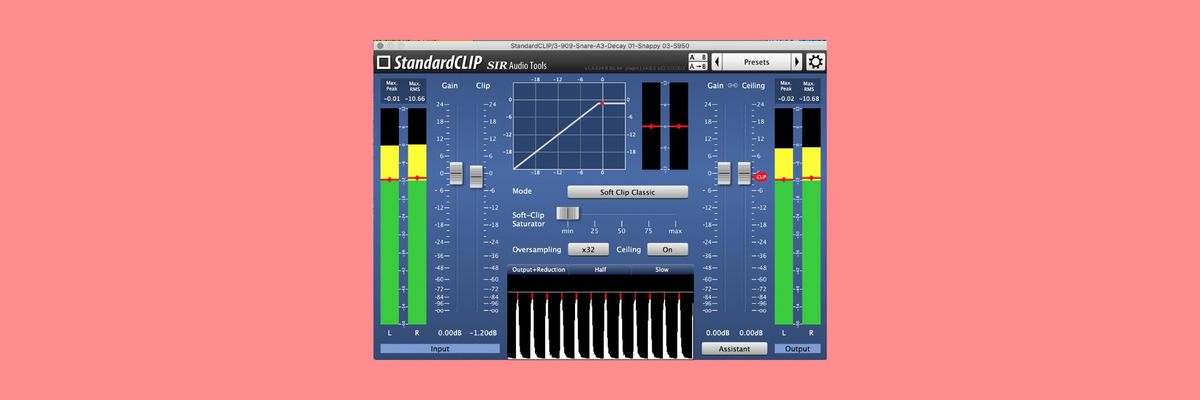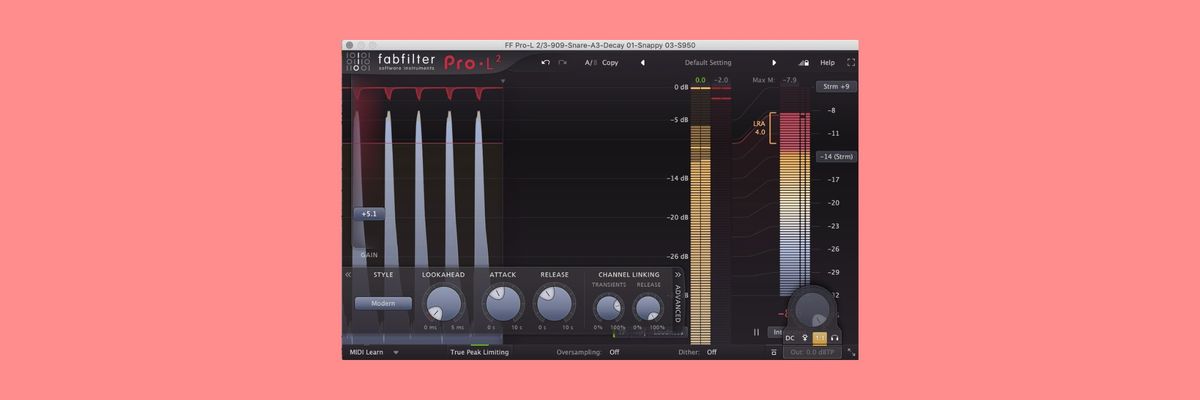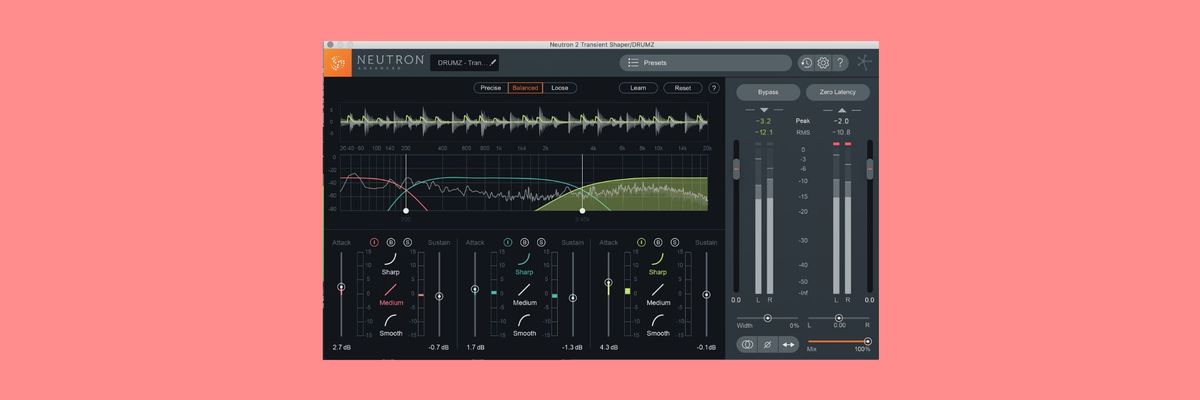Drums and percussion have always been the backbone of rhythmic music, but they hold a special place in the universe of dance music. How we produce, process, and mix drums has a direct effect on how our music makes bodies move. Crafting a solid drum groove for your tracks will create less work down the line, allowing you to take a more stripped back and efficient approach with the other elements of your song. Let’s look at three tips you can use to create crisp and punchy drums that will cut through your mix and create that infectious groove that DJ’s and fans alike are always looking for.
Tune Everything
Most sounds have some sort of resonant frequency that generates overtones which are multiples of that frequency. For example, a bass guitar that plays C2 (65 Hz) will also generate overtones at C3 (130) and C4 (260 Hz), in addition to other intervals between and above those. Although we don’t usually think of drums as having pitch, many of the samples we use can be manipulated to have more intersecting overtones, which will create a subtle, almost psycho-acoustic effect of your drums sounding more in sync. You can use tools like Ableton’s Spectrum or Voxengo Span (a free Spectrum analysis plugin) to determine where the root frequency of a sample is by hovering over the loudest frequency and noticing what the note readout is. In the case of this snare, it’s 225 Hz, which is A2.

Once you’ve gained this information, you can use that to inform your overall sample selection. For example, let’s say I have a kick whose root frequency is F1 (43 Hz). I may then re-pitch my snares or hats to the closest F, or if that is too much of a stretch, to the nearest Bb or C (as perfect fourths and perfect fifths have the most complimentary overtones to the root of your scale). In the case of this snare, if I wanted to make it more complimentary to a kick drum in F, I would tune it up one half step so the root frequency was at Bb2, which would generate more similar overtones without completely changing the sound of the sample.
Soft Clipping and Limiting Kicks and Snares
Have you ever wondered how some EDM, rock, or pop tracks can achieve such loud, punchy drums without distorting or ruining the mix? Often times, the answer lies in soft clipping or limiting the loudest elements of a drum mix. Before we get into how to do it, let’s understand what the difference between the two processes is. Clipping occurs when the audio signal amplitude exceeds the maximum voltage capability of a system, chopping off the loudest points of the signal. It will introduce distortion and can create nasty sounding results, especially in the digital environment. Limiting provides much more control over how sounds retains their harmonics, specifically attenuating signals to avoid clipping. Soft clipping refers to a form of clipping that is slightly less aggressive, essentially combining the clipping process with limiting, and can be used in creative ways while mixing.

Now that we’ve gotten the technical jargon out of the way, let’s discuss how to use these techniques. Both limiting and soft clipping will allow you to make your drums louder without introducing gigantic transient peaks in the final mix. This can be beneficial when entering the mastering process, as the dynamics processing used during mastering won’t be as aggressive. However, these processes can also introduce distortion, so it’s important to approach them carefully.
Soft-Clipping
One very affordable soft-clipper is SIR Audio Tools StandardCLIP. At only $25, this plug-in offers an array of high-quality soft-clipping algorithms that work great on kicks and snares. You can lower the “clip” fader to begin the soft-clipping process on your audio signal, then choose an algorithm (soft clip classic usually works very well) and set your oversampling limit, which will mitigate aliasing issues by processing audio at multiples of the audio’s sample rate (note that this comes at the cost of higher CPU usage). Notice how the audio peaks turn red as you lower the clip limit, indicating soft-clipping.

If you’re using Ableton Live, you can also achieve soft clipping with the Glue Compressor. Engage the “soft” button in the upper right corner of the interface, then turn up your input signal until you see the light indicator engage (it will start turning yellow when soft clipping is active). The only downside to using Glue Compressor for soft clipping is that it does not have an output trim, so if you are driving your signal especially loud to achieve soft clipping, then you will have to compensate by turning it down elsewhere (you can throw a utility after the compressor and drop the gain knob, or simply turn down your channel fader).
Limiting
Limiting will offer similar, but more transparent results than soft clipping, introducing distortion after much more processing. Because a limiter is essentially a compressor with an infinite threshold, you can imaging that any transients which hit the limiter’s threshold are simply being attenuated to never cross a certain volume level. This allows us to increase the gain of an audio signal without creating wild peaks in the mix. My favorite tool for limiting drums is FabFilter’s Pro-L2, specifically because in addition to being an excellent-sounding limiter, it has a very accurate unity gain function (represented by the “1:1” button in the output menu), which will automatically attenuate the output gain as I increase the input gain. I usually set the input gain so the limiter is applying just a slight amount of reduction to the peaks (typically 1-3 dB’s). Ableton’s limiter will work fine for this application, but as it doesn’t have a unity gain function you will, again, have to attenuate the output volume with a utility or by some other means.

Transient Shaping
Using transient shapers is a double-edged sword. On one hand, they can greatly increase the punch of your drum mix. On the other, they can easily introduce high peaks that create trouble later on the in the mixing and mastering phase. Transient shapers essentially use volume envelopes to increase or decrease the loudness of the attack or decay of a sound. There are a variety of options out there, including SPL’s Transient Designer, Native Instruments’ Transient Master, and Schaack Audio’s Transient Shaper. Each of these plugins does essentially the same thing, but have different tonal characteristics. Applying more attack and less sustain can create a staccato effect for your drum sounds, adding more punch and clarity.

If you do decide to use transient shaping, adding a soft clipper or limiter after the transient shaper can counteract the higher peaks while still retaining the sonic character of the new transient. It’s important not the overdo the settings on either plugin to create harmony between the different processing.
Multiband
Transient shaping also exists on the multiband level. One of the popular options is iZotope’s Neutron Transient Shaper, offering up to three bands of shaping. This is great for drum loops or even on your drum buss. At lighter settings, it can beef up a drum mix and create more overall dynamics and depth.

Another great option for increasing the punch and dynamics of a drum sub-mix or loop is oeksound’s Spiff, a very intelligent plugin that analyzes its incoming signal and only applies processing to parts of the signal that contain transient information. The interface looks like an EQ, but it is actually designed to tell Spiff how much of which frequencies to act on. Again, at mild settings it can really breathe life into your drums.

Want to learn more about producing and mixing powerful and dynamic drums for dance music? Take instructor Nick Garcia’s free course “Boots n’ Cats.”



